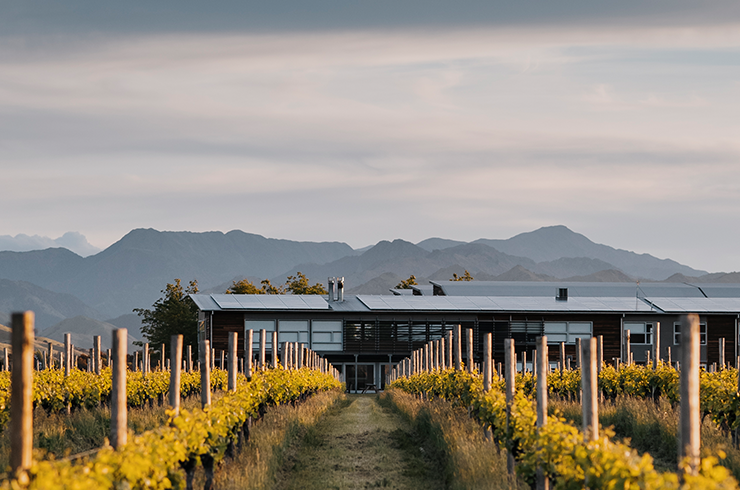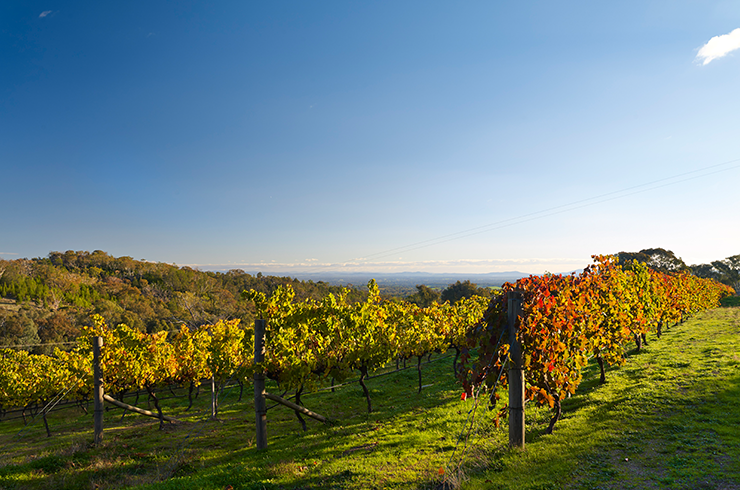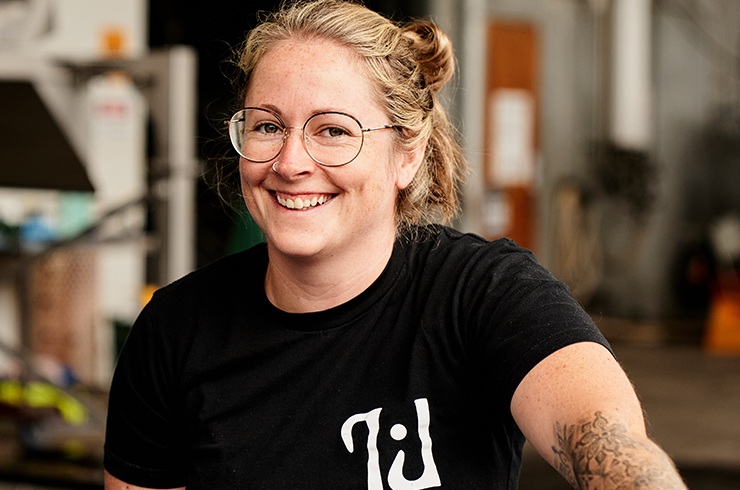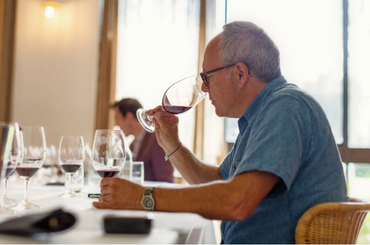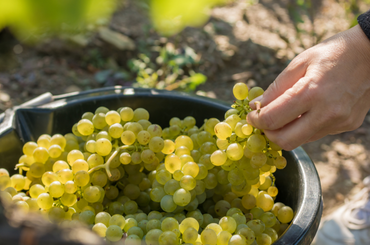The Yarra Valley is one of the largest GIs in Australia. Approximately 3130km2 contains just under 3000ha of vines. This makes the region far larger, geographically speaking, than Coonawarra (400km2), Barossa (578km2), or even Margaret River (2,137km2). This scale means the Yarra has a multiplicity of elevations, microclimates and soil types, making it a seedbed for exploration and diversity. From the early cabernet pioneers who are now inadvertent beneficiaries of climate change to those pushing the boundaries with adaptive varieties and the nuances of single-vineyard wines, there has never been a more exciting time to be a wine producer in the Yarra Valley.
While cabernet sauvignon is the world’s most planted variety and Australia’s second-most planted after shiraz, it constitutes only six per cent of the crush in the Yarra Valley. This is a long way behind pinot noir (43 per cent) chardonnay (28 per cent) and even shiraz (nine per cent). The reasons for this are varied, including the fact that cabernet has not been flavour of the month for a while. Its reputation for producing tannic wines that need time to mature hasn’t helped and, in a relatively cool climate location, the variety hasn’t been consistent over the years.
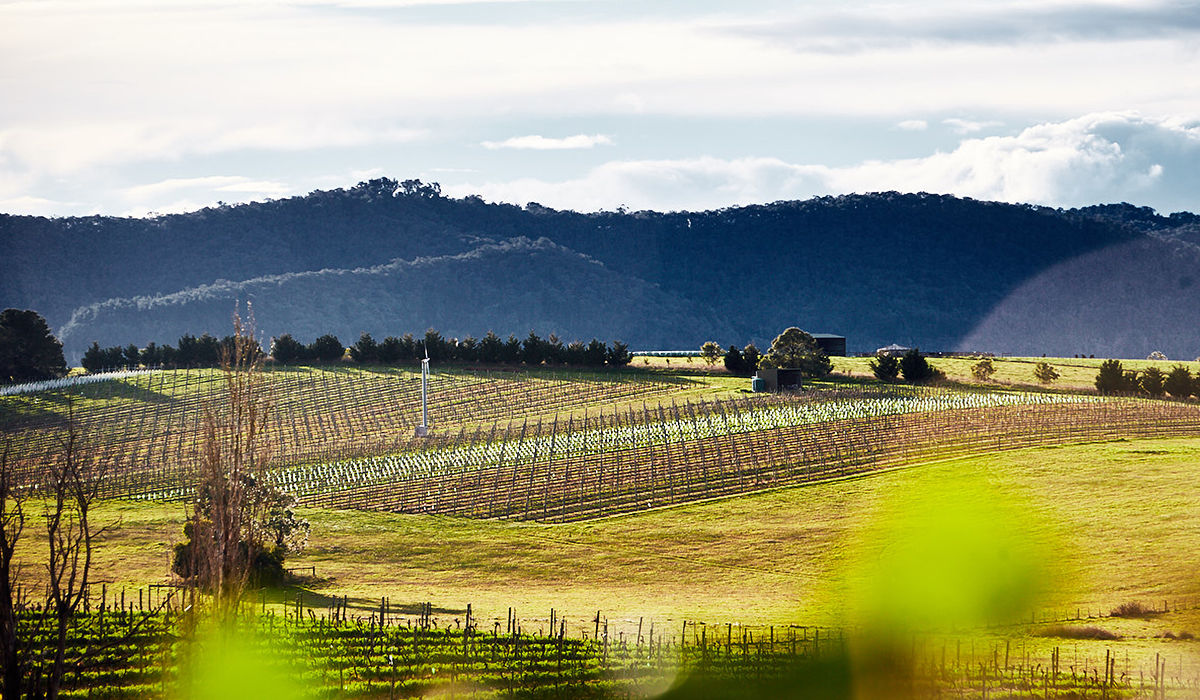
And yet it was cabernet sauvignon that spearheaded the Yarra’s renaissance in the 1960s when producers, beginning with Wantirna Estate in 1963 followed by the likes of St Huberts, Mount Mary, Yarra Yering and Yeringberg (to name a few), started to replant in the Yarra for the first time since the 1930s.
If you love the medium-bodied, fragrant and elegant cabernets that the Yarra does so well, there have never been so many great and reasonably priced wines being made. And if you consider, as I do, Mount Mary Quintet to be one of the Yarra and Australia’s greatest wines, then at the top end, the $175 price tag stacks up favourably compared to the number of $500+ shiraz wines on the market. Indeed, the 2021 vintage was my equal top-pointed wine in the Companion this year, and if I was writing a book on 100 Aussie wines to taste before you died, this would be one of them. I could make a similar argument for any number of superb Yeringberg wines made over the past decade or so, too.
Climate change is also playing its part. A late-ripening variety, cabernet is possibly the biggest beneficiary in the Yarra. As Sam Middleton, the grandson of Dr John Middleton, who first planted cabernet at Mount Mary in 1971, puts it, “We have seen a huge shift in our climate over the past 50 years towards weather considered far more favourable to ripening cabernet sauvignon than what was experienced in the ’60s and ’70s. Cabernet sauvignon has always been the cornerstone of our vineyard plantings, and this will continue well into the future.”

It’s a similar story over at Dominique Portet, where Dominique and his son Ben make a superb range of cabernet and blends priced from $28 to $70. This is a family where cabernet runs deep in the veins. Ben’s grandfather, André Portet, was the régisseur (vineyard and winery manager) at Château Lafite-Rothschild, while his uncle, Bernard Portet, was the co-founder and winemaker for Clos du Val in the Napa Valley for almost 40 years. Dominique himself came to Australia in the ’70s to make cabernet. As Ben puts it, “it’s part of our genetic makeup”. He also agrees with Sam Middleton that “the warming of the seasons is actually driving the most consistent era of quality Yarra cabernet we have ever seen.”
Although Ben is aware of cabernet‘s reputation for being austere, and that consumers want immediate gratification, he believes that modern Yarra cabernet is a wine for the now. “It whispers and doesn’t shout, and they are subtle wines that match perfectly with food.”
There are few regions in Australia that have as many strings to their bow as the Yarra. Given the Yarra Ranges rise from 50m above sea level to just over 400m in Gladysdale, where fruit can ripen up to two weeks later than on the Yarra floor, there’s clearly the potential to grow a wide range of so-called alternative varieties.
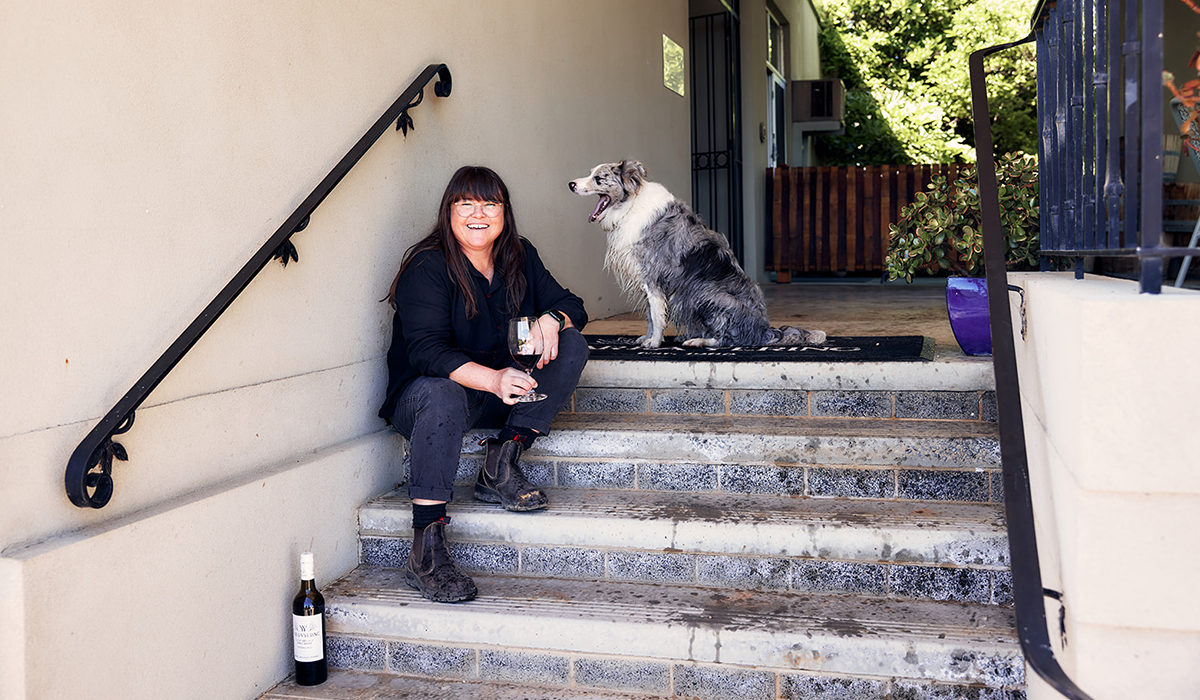
If there’s one Yarra Valley alternative variety wine that encapsulates thinking outside the square and trying to do something different it’s Yarra Yering’s superb Dry Red No 3. Originally, Dr Bailey Carrodus, who founded Yarra Yering in 1969, planted touriga nacional, tinta cão, tinta amarela, tinta roriz, alvarelhão and sousão with the intension of making his version of vintage port. He even cleared the land and terraced it in a similar fashion to the grape’s indigenous landscape in the Douro Valley in Portugal.
And while a sweet, fortified wine was made in 1996, only two have been made since. What has transpired, serendipitously as much as by design, is that the combination of these varieties, off a site at the foot of the Warramate Hills, now makes a quite brilliant dry table wine. Prior to Sarah Crowe becoming the winemaker in 2014, this was a curio in the Yarra Yering portfolio. Not anymore. Since Sarah’s first Dry Red No. 3 was made in 2015, there has been a succession of dazzling, pure fruited and vibrant wines that have scored between 95–97 in the Halliday Wine Companion. Equally impressive is that the last three vintages of this wine have been in the final taste off for the Jimmy Watson Trophy at the Melbourne Royal Wine Awards.
Sarah also points out, and this is crucial, that “climate change has definitely highlighted the importance of trying new things, as when these were planted many people thought they would never ripen here.” She goes on to say that Yarra Yering makes its own version of these varieties “that are an expression of the cooler and higher rainfall of the Yarra Valley rather than mimicking the red blends of the hotter and drier Douro Valley.” Adaptation in the vineyard and winery is the key and at Yarra Yering this includes utilising mulch and a targeted foliar fertiliser program, berry sorting to remove anything that might accentuate the tannins, and whole-berry ferments to gently extract the natural tannins present in these varieties.
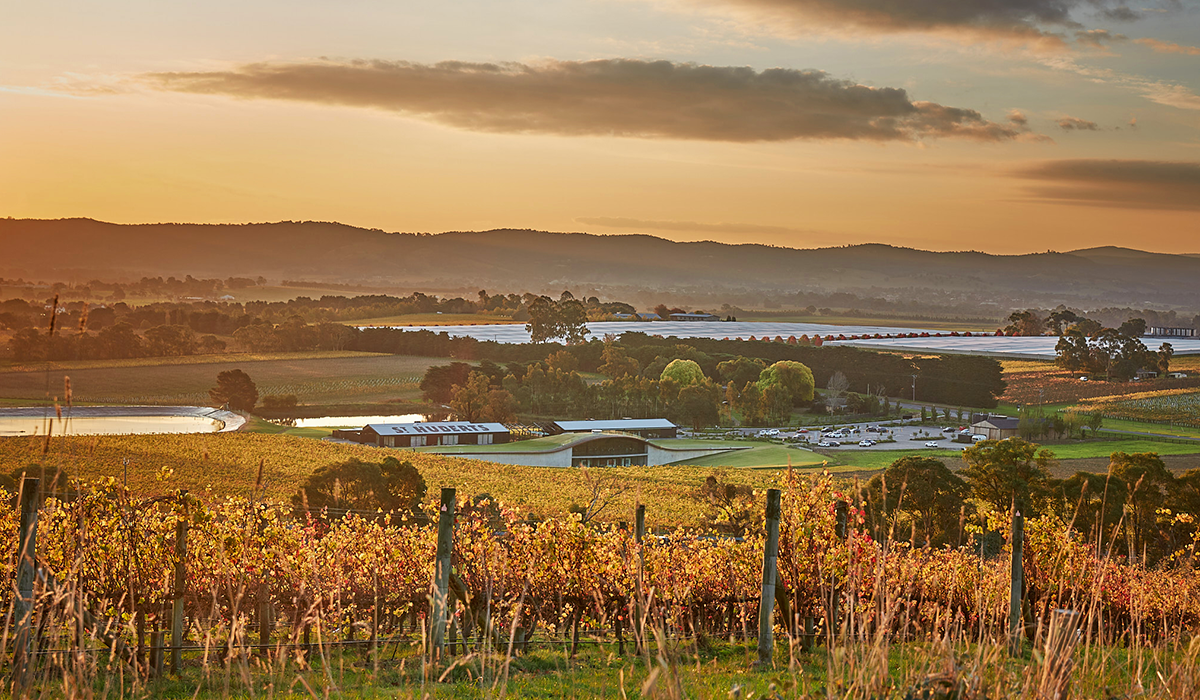
They are not alone, of course, and the Yarra is now dotted with producers responding to both demand for something different and, more importantly, to a changing climate. What Serrat has done with grenache, De Bortoli with gamay, Hoddles Creek with pinot blanc, Luke Lambert with nebbiolo and TarraWarra with barbera is just the tip of the alternative varieties iceberg. You can expect to hear more about these and others in the future.
Although the McLaren Vale wine region has been at the forefront of soil surveying (its ‘The Geology of the McLaren Vale Wine Region’ map was first published in 2010), the Yarra leads the way with the production of single-vineyard wines that reflect both vineyard and subregion.
This is in part due to chardonnay and pinot producers being influenced by a particularly Burgundian concept of terroir. At the core of this very French philosophy is the notion that while you can grow and make chardonnay successfully all over the world, you can only make Meursault in one place, and that’s Meursault. Here, chardonnay is the messenger, not the message.
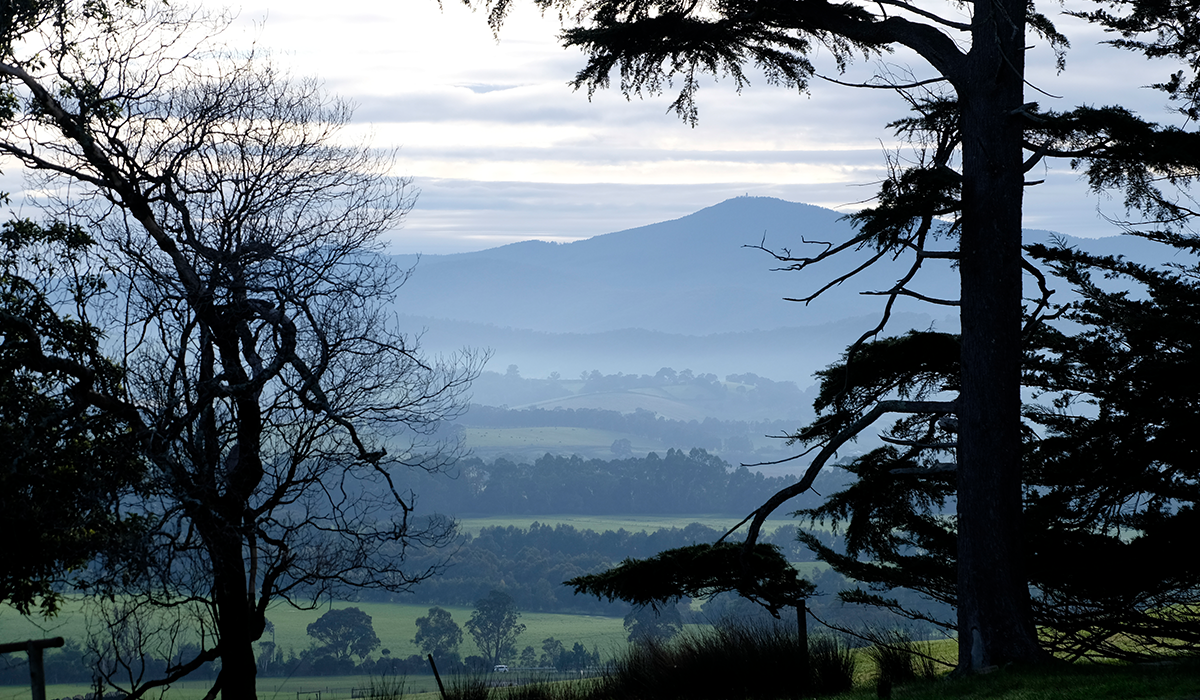
It is for this reason that a producer like Guy Roulot makes six Meursault village lieux-dits (single-vineyard wines). Line them up and you can clearly see the differences between the individual vineyards/terroirs in wines made using basically the same technique. In the Yarra, numerous producers make multiple single-vineyard chardonnays and pinot noirs – far more than anywhere else in Australia. Amongst the most prominent are Oakridge, Giant Steps, Hoddles Creek Estate and Coldstream Hills. All four are in the top 25 of the inaugural Halliday Wine Companion Top 100 Wineries 2023 selected by Campbell Mattinson.
The winemaker who has devoted the most effort to produce a range of wines that “attempt to grasp the character of the Yarra’s various distinctive subregions” is Mac Forbes. Taking a leaf from the Burgundy playbook, the labels on his village range celebrate the various towns or subregions that the fruit is grown in. So much so, that this range only has the name of the subregion on the front label. In 2022, there were four chardonnays and five pinot noirs: Coldstream, Gembrook, Gladysdale and Woori Yallock. From the richer, fleshier Coldstream, made from fruit near the valley floor and from grey/loam clay soils, to the Gembrook, where the fruit is grown on granitic soils at 300m, and is therefore, finer boned, these are four distinctly different wines.
And while elevation and then soil are still the biggest theme when it comes to discussing subregions, Mac is quick to point out, “It’s still early days and it’s complicated as to how we discuss the subregions due to the arbitrary boundaries of towns.” He goes on to say that what excites him most is the soils and then wind and solar impact and that “as to the future, I’m truly excited to circle back to what’s unique about the Yarra, rather than try to demonstrate how similar we are to other regions. A combination of growing into our skin, better engagement with the elders and how they see various regions around the Yarra, and finally, an increasing accumulation of knowledge.”
More from Philip Rich
-
From the tasting team
Australia's great value-for-money chardonnay
29 Nov 2023 -
From the tasting team
Philip Rich on the Yarra Valley producers to watch
19 Sep 2023 -
From the tasting team
Philip Rich on Australian Grenache
14 Sep 2022 -
From the tasting team
Philip Rich on Yarra Valley chardonnay
2 Feb 2022



